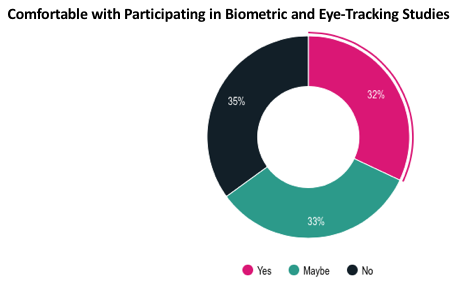Editor’s note: Kristen Miles is director of insights at Branded Research, San Diego, Calif. This is an edited version of a post that originally appeared under the title, “Younger consumers most likely to participate eye tracking studies.”
Biometric and eye-tracking studies provide cutting-edge insights that drive strategic marketing and product development decisions. These types of studies monitor the physiological response or eye movement of participants as they are exposed to stimuli. This type of research captures what catches a participant’s eye. That stimulus could be a Web site design, an advertisement or a concept product. Brands can recruit for these kinds of studies through quantitative research.
Eye-tracking and biometric research are growing in popularity among researchers and are valuable for researchers but what do participants think? We polled our community and asked our users if they are open to participating in eye-tracking and biometric research. Our poll was conducted on June 26, 2018 and 16,628 users responded.
Overall, users have mixed feelings about participating in this type of research. Approximately 32 percent responded that they are comfortable participating in biometric and eye-tracking research. Thirty-three percent say they might be comfortable but they are not sure and 35 percent say they would not feel comfortable participating in this type of research.
So, what type of consumers are most likely to favor participating in eye-tracking and biometric research?

Our poll found that younger consumers are more open to this type of research than older consumers. Approximately 36 percent of Millennials (age 22-38) and 34 percent of Gen X (age 39-50) say they are comfortable participating in eye-tracking and biometric research, compared to 28 percent of Baby Boomers (age 51-69) and 20 percent of Silent Generation (age 70+). Millennial men are even more likely to feel comfortable participating at 41 percent.
